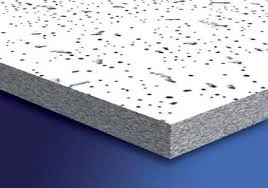10 月 . 31, 2024 21:25 Back to list
Ceiling Grid Support Wire for Secure Installations and Enhanced Stability
The Importance of Ceiling Grid Tie Wire in Modern Construction
In the world of modern construction, attention to detail is paramount. One of the often-overlooked elements in building design is the ceiling grid system. A ceiling grid not only provides support for ceiling tiles but also plays a critical role in ensuring the overall structural integrity of a space. Central to the functionality of this system is the ceiling grid tie wire, a seemingly simple yet essential component.
What is Ceiling Grid Tie Wire?
Ceiling grid tie wire is a type of wire commonly used in suspended ceiling installations. It acts as a support mechanism that secures the ceiling grid to the building structure. Typically made from durable materials such as steel, this wire ensures that the grid remains stable and can hold the weight of ceiling tiles, light fixtures, and other elements without sagging or collapsing. The gauge of the wire can vary, but it is crucial that it is strong enough to withstand the loads placed upon it.
Key Functions of Tie Wire
The primary function of ceiling grid tie wire is to provide additional support to the ceiling grid, thus preventing any movement that could lead to damage
. This added stability is especially important in commercial spaces where large, heavy ceiling tiles are used, or in areas that experience vibrations from machinery or foot traffic. Without the tie wire, the integrity of the ceiling could be compromised, leading to costly repairs and safety hazards.ceiling grid tie wire

Moreover, tie wires facilitate precise leveling of the grid system. During installation, the wire allows contractors to make fine adjustments to the height of the grid, ensuring that it is even and aligned properly. This attention to detail not only enhances the aesthetic of the finished space but also prevents issues with sound and lighting that can arise from an improperly installed ceiling.
Installation and Usage Considerations
Installing ceiling grid tie wire requires careful planning and attention to standard building codes. Typically, the wire is attached to the structural components of the building, such as beams or joists, at intervals specified by the manufacturer. Depending on the size and weight of the ceiling tiles, multiple tie wires may be necessary to distribute the load evenly. It is also crucial to select the right type of tie wire for the project, taking into account the weight of the ceiling material and the specific installation setting.
In addition to technical specifications, safety considerations must also be observed. Proper tension should be applied to the wire to ensure it does not sag or snap under load. Regular inspections should be conducted to check for wear and tear, as even the best materials can deteriorate over time.
Conclusion
Ceiling grid tie wire may not be the most glamorous aspect of construction, but its role cannot be understated. It is integral to creating safe, stable, and visually appealing ceilings in both residential and commercial settings. As the demand for innovative and flexible building designs continues to grow, the importance of reliable structural components like ceiling grid tie wire will undoubtedly remain a key focus for construction professionals. Understanding its vital role in the overall building framework ensures that engineers and contractors can deliver spaces that are not only beautiful but also built to last.
-
Revolutionizing Interior Design with Ceilings t grid Suspended SystemNewsOct.29,2024
-
Revolutionizing Ceiling Design with ceiling access panel with Gypsum Tile WaterproofNewsOct.29,2024
-
Revolutionizing Interior Design with PVC Gypsum Ceiling: A Comprehensive GuideNewsOct.29,2024
-
Elevating Interior Design with High quality Mineral Fiber Ceiling TilesNewsOct.29,2024
-
Revolutionizing Interior Design with PVC Gypsum Ceiling: A Comprehensive GuideNewsOct.29,2024
-
Elevating Interior Design with High-Quality Mineral Fiber Ceiling Tiles: A Comprehensive GuideNewsOct.29,2024







